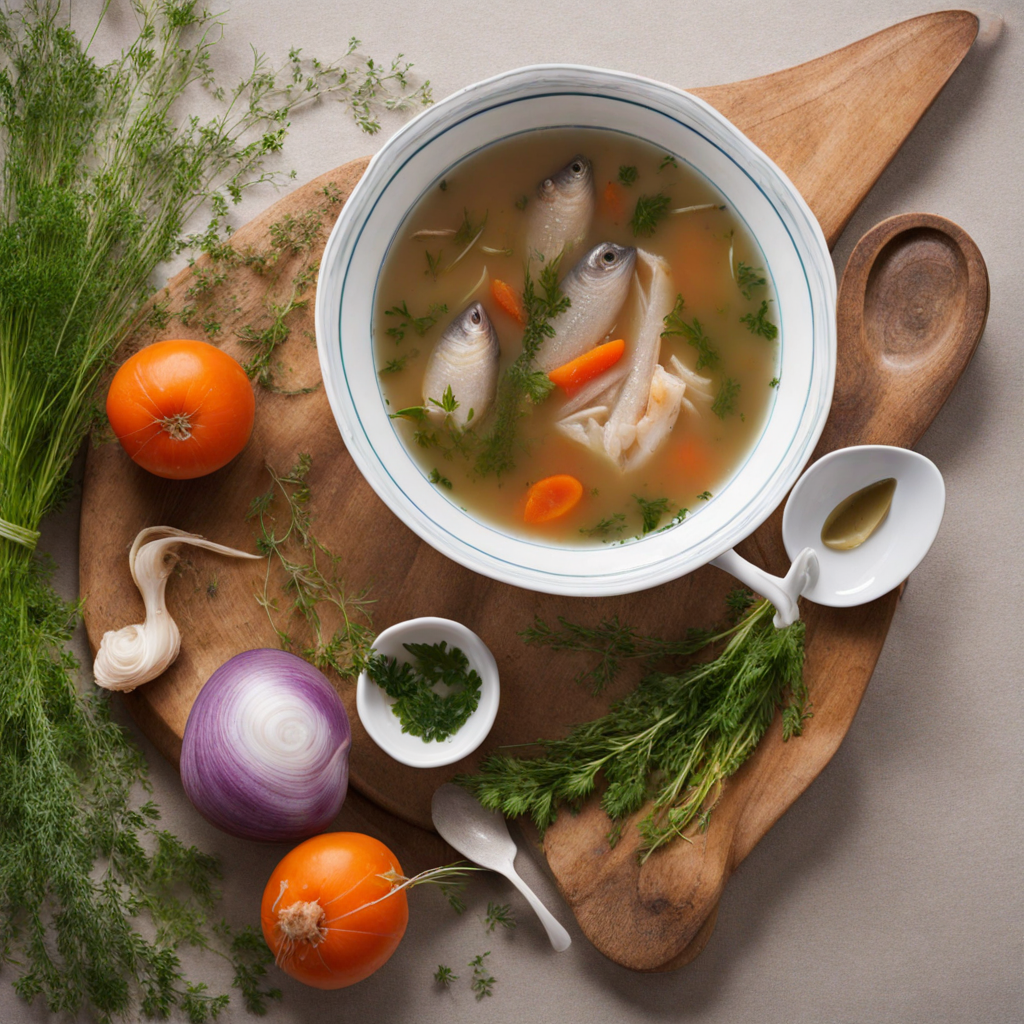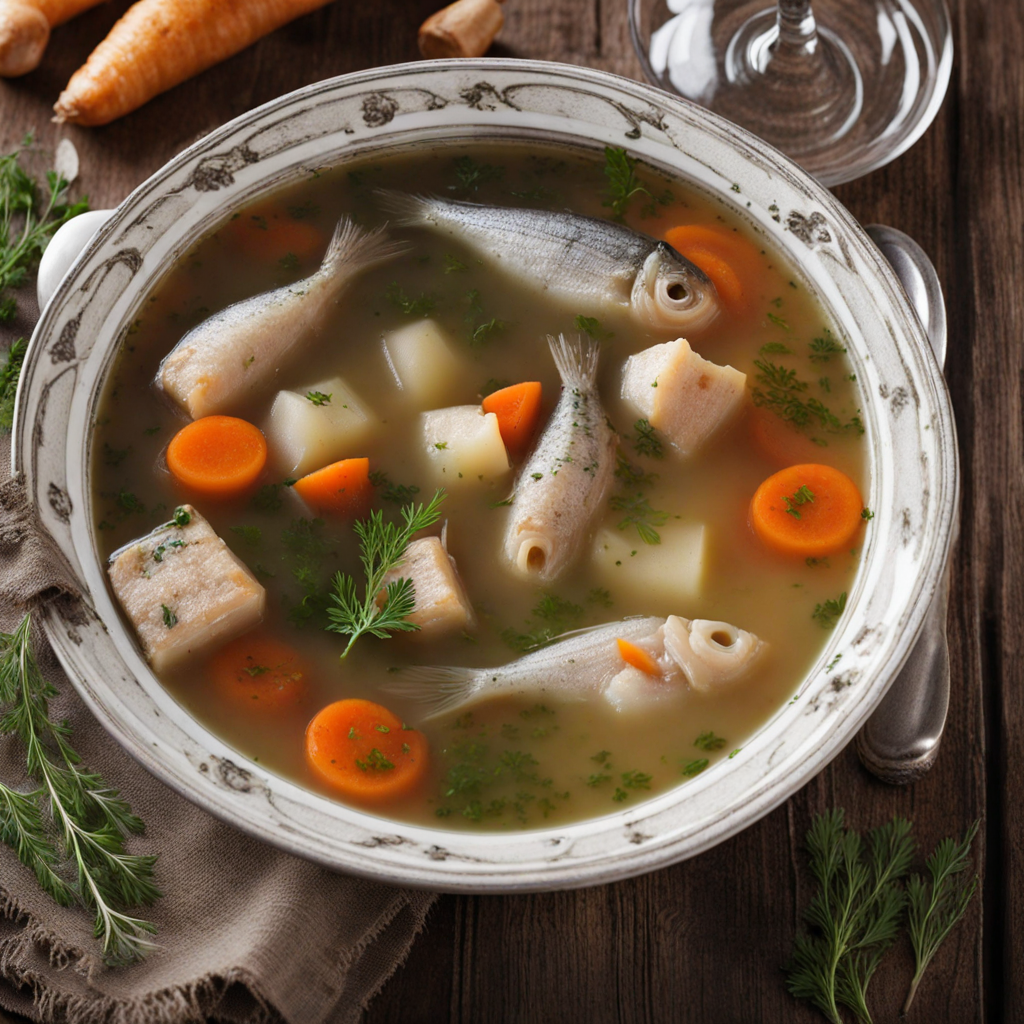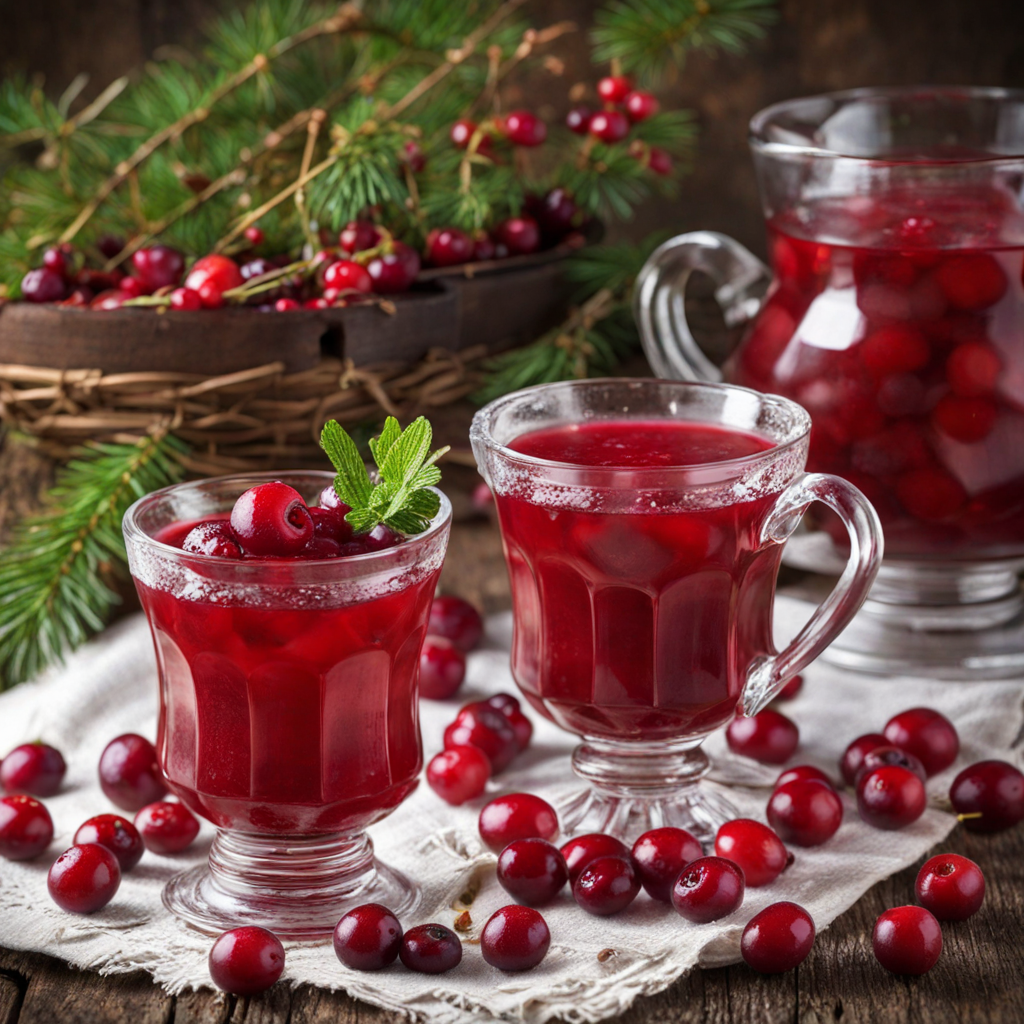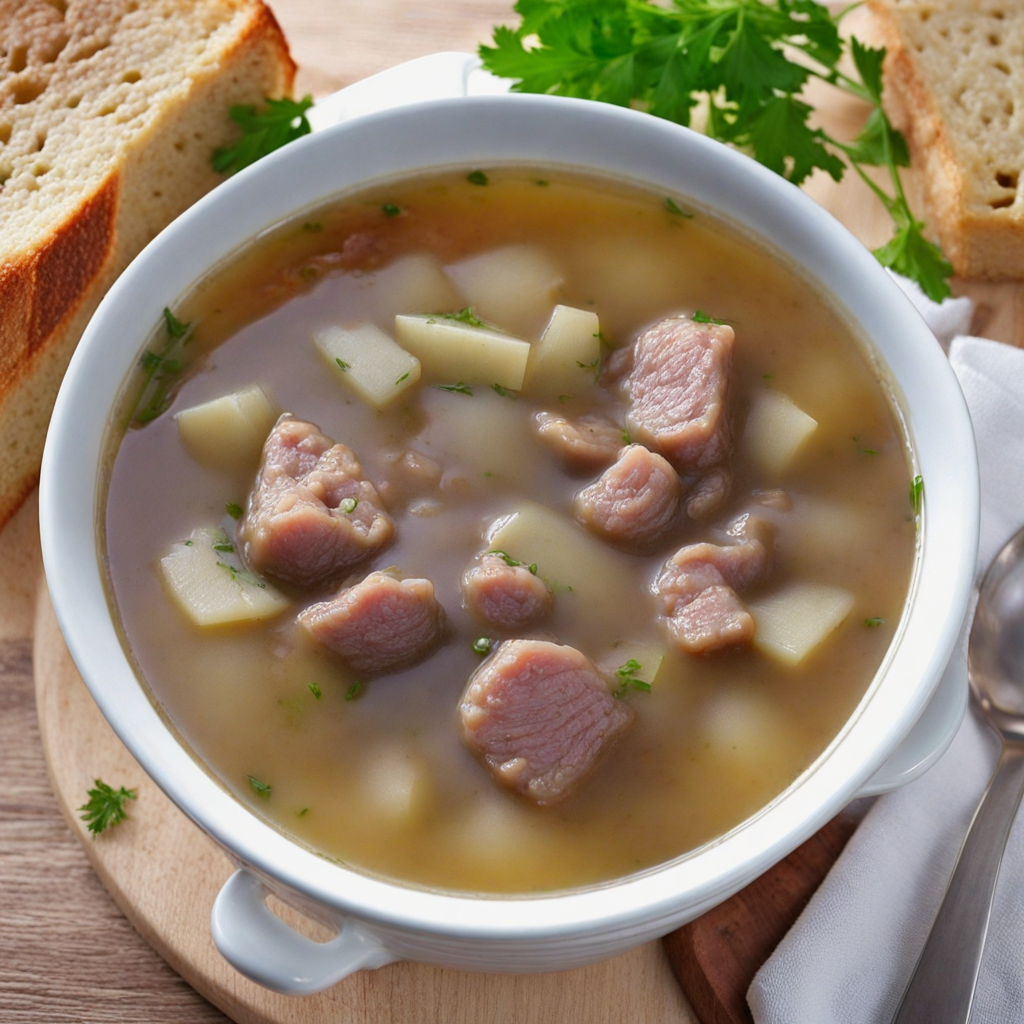Ukha
Ukha is a traditional Russian fish soup that embodies the essence of Russian culinary heritage. This dish is typically made with a variety of fresh fish, such as salmon, pike, or perch, which are simmered to create a rich and flavorful broth. The process begins with sautéing onions, carrots, and sometimes potatoes, which add depth and sweetness to the soup. The fish is then added along with herbs like dill and parsley, enhancing the aroma and freshness of the dish. The result is a light yet hearty soup that perfectly balances the natural flavors of the fish with the wholesome goodness of vegetables. One of the defining characteristics of Ukha is its versatility. Depending on the region and personal preferences, the ingredients can vary widely, allowing for a unique taste experience each time. Some versions may include spices like bay leaves and black peppercorns, while others might be seasoned with a hint of vinegar or lemon juice to brighten the flavors. Traditionally, Ukha is enjoyed with a slice of dark rye bread or accompanied by a dollop of sour cream, which adds a creamy richness to the dish. The simplicity of the ingredients allows the freshness of the fish to shine through, making it a favorite among seafood lovers. Ukha is not just a meal; it’s a social experience often enjoyed during gatherings and celebrations. Its preparation typically involves family or friends coming together, sharing stories, and savoring the warmth of the soup. In Russia, Ukha is often served as a first course during festive occasions, embodying a sense of comfort and familiarity. Whether you are enjoying it on a chilly winter day or at a summer dacha by the river, Ukha offers a delightful taste of tradition that invites you to slow down and appreciate the simple pleasures of good food.
How It Became This Dish
The Rich History of Уха: Russia's Beloved Fish Soup Уха, a traditional Russian fish soup, is not just a dish; it embodies a cultural narrative that stretches back centuries, reflecting the country's deep connection to its rivers, lakes, and the bounty of its natural resources. This hearty soup, often made with various local fish, vegetables, and herbs, serves as a culinary emblem of Russia's diverse regional identities, communal gatherings, and historical traditions. Origins: The Birth of Уха The origins of Уха can be traced back to the early Slavic tribes, who relied heavily on the abundant freshwater fish found in the rivers and lakes of the Russian landscape. The word “уха” itself is believed to have Slavic roots, linked to the Old Russian word for broth or soup, possibly deriving from the Proto-Slavic term *ųha*, which means “broth” or “soup.” Originally, Уха was a simple, rustic dish, often prepared by fishermen on the banks of rivers, utilizing the freshest catch of the day. Its earliest forms were likely a basic mixture of boiled fish and water, seasoned with whatever herbs or vegetables were available. Historically, Уха was associated with the peasant class, a nourishing meal that could be made with minimal ingredients. Fish was a staple in the Russian diet, particularly in regions like Siberia and the Volga River basin, where fishing was not only a means of sustenance but also a way of life. As the dish evolved, it became more refined, incorporating a wider variety of fish and seasonings, reflecting the culinary influences of the different regions of Russia. Cultural Significance Уха is much more than just a soup; it is a cultural cornerstone that embodies the spirit of Russian hospitality and communal dining. Traditionally, Уха is served on special occasions, family gatherings, and during festive celebrations. It is often enjoyed alongside rye bread, pickles, and vodka, turning an ordinary meal into a celebratory feast. The act of making Уха is often communal, with family members gathering to prepare the ingredients, share stories, and celebrate their cultural heritage. The soup is also steeped in folklore and tradition. In many Russian families, recipes for Уха are passed down through generations, each family adding their unique twist to the dish. Some regions might use sturgeon, while others opt for salmon or pike; the choice of fish often reflects local availability and tradition. In Siberia, for example, the use of omul, a fish found in Lake Baikal, is common, while the Volga region might favor catfish or perch. The variations in ingredients highlight the regional diversity of Russia's culinary landscape and illustrate how Уха serves as a canvas for local flavors. In many parts of Russia, Уха is also associated with spirituality and rituals. It is often prepared for the Feast of Epiphany, a time when families gather to celebrate and partake in special meals. Traditionally, fishermen would also prepare Уха during fishing trips, believing that the act of cooking and sharing this simple dish would bring good fortune and a successful catch. Development Over Time As Russia progressed through historical epochs, so too did Уха. The 17th and 18th centuries marked a turning point for Russian cuisine, influenced by the reign of Peter the Great, who sought to modernize Russia and promote Western culinary practices. This era saw the introduction of new ingredients and cooking techniques, which began to permeate traditional dishes, including Уха. The soup became more sophisticated, with the addition of spices and herbs that were previously uncommon in Russian kitchens. By the 19th century, Уха had cemented its status as a national dish, celebrated in literature, art, and folklore. Renowned authors like Anton Chekhov and Leo Tolstoy often mentioned Уха in their works, using it as a symbol of comfort and nostalgia. It became emblematic of rustic life and the simplicity of the Russian soul, often depicted in cozy family gatherings. During the Soviet era, Уха was promoted as a symbol of Soviet hospitality, often featured in state banquets and public celebrations. The government encouraged the use of local fish resources, emphasizing the importance of Уха in the national diet. Canned Уха also became popular, making the dish more accessible to urban dwellers who might not have the means to prepare fresh fish soup regularly. In recent years, Уха has experienced a renaissance as chefs and home cooks alike have begun to explore its traditional roots while experimenting with modern interpretations. Contemporary variations may include a wider array of ingredients, such as exotic fish, seafood, and contemporary garnishes, while still paying homage to the foundational aspects of the soup. Conclusion: Уха – A Culinary Legacy Today, Уха remains a vital part of Russian culinary heritage, cherished by both the young and old. It stands as a testament to the resilience of traditional food practices and the importance of community and family in Russian culture. The soup's ability to adapt while retaining its core essence speaks to the broader narrative of Russian history itself—one of adaptation, survival, and deep-rooted pride in local customs. In a world that increasingly embraces global cuisine, Уха serves as a reminder of the simple pleasures found in a bowl of soup, the stories shared over meals, and the connections forged through food. As families continue to gather around the table, sharing their unique recipes and memories, Уха will undoubtedly remain a cherished symbol of Russian identity, a dish that transcends time and place, nourishing both body and spirit.
You may like
Discover local flavors from Russia







